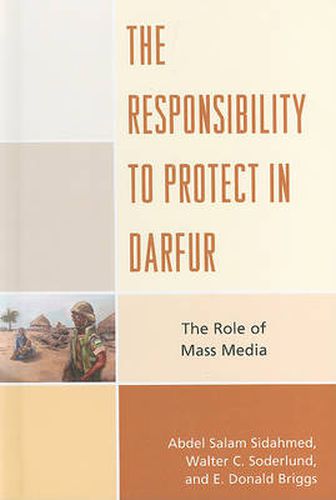Readings Newsletter
Become a Readings Member to make your shopping experience even easier.
Sign in or sign up for free!
You’re not far away from qualifying for FREE standard shipping within Australia
You’ve qualified for FREE standard shipping within Australia
The cart is loading…






Long-simmering conflict in the Sudanese region of Darfur came to a boil in the spring of 2003 and became a focus of American media attention in September 2004. After the genocide in Rwanda the international community developed a new way to deal with genocide-the Responsibility to Protect doctrine which legitimized intervention in case of egregious loss of human life. Despite this new doctrine, it took over five years of conflict in Darfur before the U. N. began intervening. The Responsibility to Protect in Darfur: The Role of Mass Media, traces the development of international intervention in domestic conflict, culminating in the concept of Responsibility to Protect in 2001. The authors explain the background and complexity of the crisis besetting Darfur, and document U.S. media coverage of the crisis in terms of framing that would mobilize public opinion behind international intervention.
The book traces evolution in international norms regarding state sovereignty and human rights that led to the articulation of Responsibility to Protect and its subsequent adoption by the international community in 2005. It provides an understanding of the complex nature of the Darfur crises, in a way that was seriously lacking in media coverage. The authors also analyze the affects media coverage of the crisis had on the world’s reaction, particularly in the U.S. Specifically it looks at television coverage of the crisis, and the newspaper coverage, particularly through The New York Times. Finally, the authors ask if Responsibility to Protect was helpful in Darfur, and if it will be in the future for other countries.
$9.00 standard shipping within Australia
FREE standard shipping within Australia for orders over $100.00
Express & International shipping calculated at checkout
Long-simmering conflict in the Sudanese region of Darfur came to a boil in the spring of 2003 and became a focus of American media attention in September 2004. After the genocide in Rwanda the international community developed a new way to deal with genocide-the Responsibility to Protect doctrine which legitimized intervention in case of egregious loss of human life. Despite this new doctrine, it took over five years of conflict in Darfur before the U. N. began intervening. The Responsibility to Protect in Darfur: The Role of Mass Media, traces the development of international intervention in domestic conflict, culminating in the concept of Responsibility to Protect in 2001. The authors explain the background and complexity of the crisis besetting Darfur, and document U.S. media coverage of the crisis in terms of framing that would mobilize public opinion behind international intervention.
The book traces evolution in international norms regarding state sovereignty and human rights that led to the articulation of Responsibility to Protect and its subsequent adoption by the international community in 2005. It provides an understanding of the complex nature of the Darfur crises, in a way that was seriously lacking in media coverage. The authors also analyze the affects media coverage of the crisis had on the world’s reaction, particularly in the U.S. Specifically it looks at television coverage of the crisis, and the newspaper coverage, particularly through The New York Times. Finally, the authors ask if Responsibility to Protect was helpful in Darfur, and if it will be in the future for other countries.